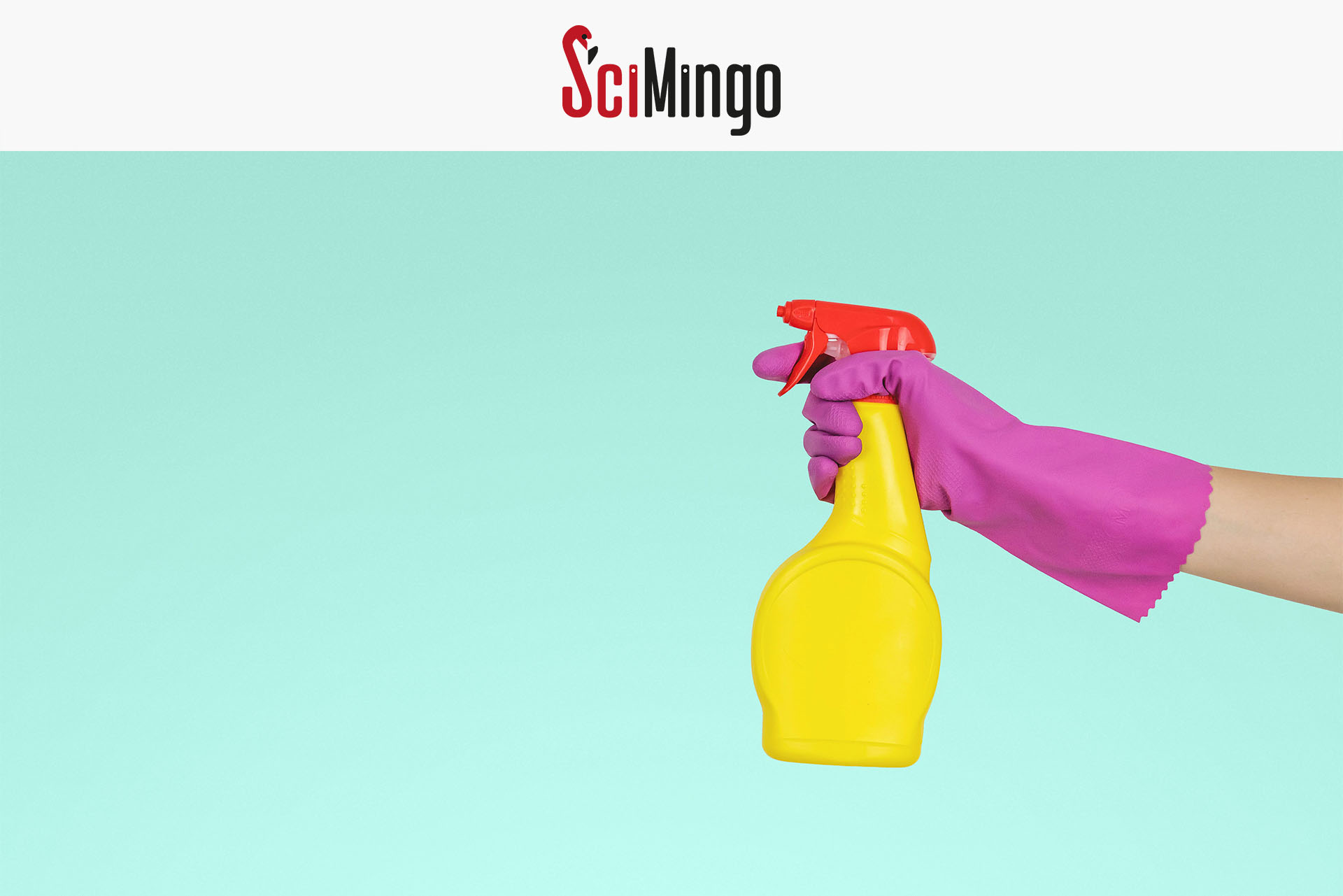In a recent Nature publication, Hans-Curt Flemming and Stefan Wuertz estimated that around 80% of earth’s bacteria live in surface-associated social communities. In these communities, bacteria are covered with biofilms: self-produced slimy secretions which keep them protected against human conspiracies to kill them.
According to research at ILVO (Flanders Research Institute of Agriculture, Fisheries and Food), a large number of bacteria remain on food contact surfaces following current cleaning and disinfection practices. In multiple food industries, surfaces are laden with bacterial biofilms which cause quality issues and are often responsible for food-borne outbreaks, impacting both the economy and individual consumers.
“Bacterial biofilms are a serious concern across diverse food processing industries of Belgium.” – Marc Heyndrickx, ILVO
Professor Marc Heyndrickx (scientific director at the Technology and Food Science unit of ILVO) says: “Bacterial biofilms are a serious concern across diverse food processing industries of Belgium, particularly for the dairy, egg, and meat processing industries, where spoilage and quality defects result in economic losses of millions of euros annually.”
While they remain strongly attached to surfaces, bacteria may produce more enzymes and toxins than planktonic cells and this can lead to a greater chance of food spoilage as well as life-threatening infections, adds Steve Flint (Professor of Food Safety at Massey University, New Zealand).
Bacterial biofilms: social havens of cooperation
The success of surface bacteria depends on their ability to maintain and strengthen multilateral cooperation. The bacteria aren’t discriminatory: many different types will team up and live in harmony in these colonies, where they communicate using their own chemical language and even help feed each other. They establish physical relationships and exchange genetic material to share important traits, like resistance to antimicrobials and heavy metals.
“Different types of bacteria enjoy a mixed social life, united against any form of human interference.”
Loyalty, cheating, and sacrifice are a part of this microbial social life, just as in human societies. Strong bacteria protect weaker friends by sharing their weapons and defenses, akin to a welfare society. In rare cases, a single type of bacteria will live in an exclusive community, but far more commonly many different types of bacteria enjoy a mixed social life, united against any form of human interference. This cooperative opposition is the secret behind their resilience and hardiness.
Serious consequences of biofilms
In many industrial setups, the availability of water, food, and ideal surfaces promote the formation and continuation of bacterial biofilms. Unfortunately, these social communities often end up harboring notorious disease-causing bugs like Salmonella, Escherichia coli, and Cronobacter sakazakii, some of which can cause serious illness or even death.
In a recent example, many tons of infant formula were recalled from the US market following tragic cases of infant illness and death. Similarly in Belgium, a recent Salmonella outbreak was linked to butter cream used in the manufacture of Kinder chocolate, according to the European Food Safety Authority (EFSA).
“Salmonella, Escherichia coli, and Listeria monocytogenes strains often thrive on food contact surfaces in the form of biofilms.” – Koen De Reu, ILVO
Many research findings have shown links between food-borne infections and surface-associated bacterial growth, especially in the egg, meat, and fresh produce industries. Koen De Reu (senior researcher at ILVO), says: “Salmonella, Escherichia coli, and Listeria monocytogenes strains often thrive on food contact surfaces in the form of biofilms, and we often recover these bacteria when we swab food contact surfaces following cleaning and disinfection.” In his experience, detection of these biofilms requires the use of specific swabbing materials for different surfaces and often disassembling of equipment.
ILVO’s approach to tackling biofilms
Professor Hans Steenackers (a collaborative partner of ILVO from KU Leuven) recently shared some strategic anti-biofilm findings in a Nature Communications publication. His group found that the most evolutionarily robust strategy to tackling bacterial biofilms is to prevent their cooperation.
Scientists at ILVO are currently attempting to explore interspecific interactions among surface-based bacteria, recovered from different food industries, using cutting edge technologies (e.g. RNA-sequencing, biosensing, and confocal laser scanning electron microscopy). The project (funded by the European Commission’s ‘EXCELLENT SCIENCE – Marie Skłodowska-Curie Actions’ programme) hopes to provide mechanistic insights into bacterial interactions in mixed-species biofilms and provide knowledge indispensable for the control of these communities on food contact surfaces.
Read this other BioVox article to learn about the SUPERYEAST project, using microbes to improve beer, bread, and even bioethanol in the Belgian food industry!
ILVO researchers have already found that some of the most problematic bacterial species on food contact surfaces exist in certain bacterial combinations, which probably help them survive cleaning and disinfection. Findings from their preliminary trials show that some of the most prevalent microbial contaminants of the food industry grow and thrive much better when they grow in the presence of vital bacterial partners, and interestingly many bacterial species only grow well in specific mixed-species biofilms compared to their growth in the same mixed planktonic cultures or in their own single-species biofilms.
As part of the ongoing project, Prof. Patrick Wagner (KU Leuven) will implement a biosensor to monitor growth signals of mixed bacterial communities on stainless steel surfaces, while Prof. Mette Burmølle (University of Copenhagen) will perform architectural and structural analyses of bacterial biofilms. This exciting project ultimately hopes to open new avenues for microbial control of problematic bacterial biofilms on food contact surfaces.


